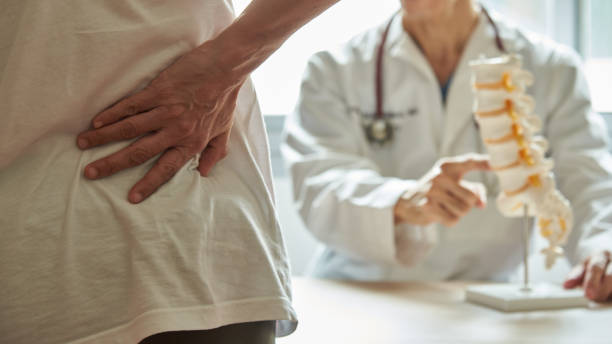Postural stability and freedom from back pain are important factors in leading a healthy and fulfilling life. While these issues can be challenging, chiropractic care offers a holistic and natural approach to address them.
Below are various chiropractic techniques that aim to improve postural stability and alleviate back pain. These methods, rooted in spinal adjustments and biomechanical corrections, empower individuals to regain control of their health, allowing them to live more comfortably and actively.
1. Spinal Adjustments
Spinal adjustments are the groundwork of chiropractic care. Chiropractors in Fort Myers apply controlled force to specific areas of the spine using their hands or specialized instruments. This technique helps correct misalignments, known as subluxations, in the spine. Subluxations can lead to pain, reduced mobility, and even impact the nervous system’s function.
By performing spinal adjustments, chiropractors aim to restore the spine’s proper alignment, reduce pain, improve mobility, and enhance postural stability. These adjustments can provide remarkable relief from back pain, particularly in conditions like herniated discs or sciatica.
2. Flexion-Distraction Technique
The flexion-distraction technique is a gentle, non-invasive method commonly used by chiropractors to treat various conditions, including lower back pain and sciatica. It involves using a specialized table that allows controlled spinal traction and flexion movements.
During the procedure, the patient lies face down on the table while the chiropractor applies rhythmic, pumping motions to specific spine areas. This technique helps reduce pressure on spinal discs, alleviating pain and promoting natural healing.
3. Active Release Technique (ART)
The Active Release Technique (ART) is a patented, soft-tissue manipulation method used by chiropractors to treat issues such as muscle tightness, pain, and reduced flexibility. ART involves a combination of precisely directed tension, patient movement, and specific chiropractic protocols.
Chiropractors use their hands to apply tension to soft tissues while instructing the patient to move through specific motions. This technique effectively targets adhesions or scar tissue within muscles and fascia, breaking them down to enhance mobility and reduce pain.
4. Cox Flexion-Distraction
The Cox Flexion-Distraction technique is particularly beneficial for individuals with spinal stenosis or disc herniations. It involves using a specialized treatment table that allows controlled and gentle spinal decompression.
During the procedure, the patient lies face down on the table, and the chiropractor employs a pumping motion to flex and decompress the spine. This technique helps alleviate pressure on spinal nerves, reduces pain, and enhances postural stability.
5. Thompson Technique
The Thompson Technique, or the Thompson Terminal Point (TTP) Technique, employs specialized chiropractic tables with drop mechanisms. These mechanisms allow for precise adjustments of specific spinal segments.
Chiropractors using the Thompson Technique adjust by applying pressure to the appropriate areas while dropping a section of the treatment table. This gentle and effective method is often preferred for patients seeking chiropractic care for posture and back pain issues.
6. Gonstead Technique
The Gonstead Technique is a systematic and comprehensive chiropractic approach that requires extensive training and expertise. Chiropractors use this technique to analyze the spine, including X-rays and precise palpation thoroughly.
The Gonstead Technique focuses on specific, targeted adjustments to the spine, aiming to correct misalignments and optimize spinal function. This technique is highly regarded for its precision and effectiveness in addressing postural stability and back pain issues.
7. Sacro-Occipital Technique (SOT)
The Sacro-Occipital Technique (SOT) is a comprehensive chiropractic method that focuses on the relationship between the sacrum and the occiput, the back of the skull. SOT practitioners use a variety of approaches, including precise spinal adjustments, pelvic blocking, and cranial techniques.
SOT aims to restore balance to the body’s structure, including the spine, pelvis, and cranial bones. By addressing imbalances in these areas, SOT can improve posture and relieve back pain. Chiropractors who practice SOT often tailor their treatments to individual patient needs, making it a versatile option for those seeking postural stability and pain relief.
8. Graston Technique
It is a dedicated form of manual therapy used by chiropractors to address soft tissue injuries and musculoskeletal conditions. It involves the use of highly specialized stainless steel tools and instruments to detect and treat areas of soft tissue restriction.
Chiropractors trained in the Graston Technique use these instruments to apply controlled pressure to muscles, tendons, and ligaments. This process helps identify and break down scar tissue and adhesions, promoting improved range of motion and reducing pain.
The Graston Technique complements other chiropractic methods in enhancing postural stability and overall musculoskeletal health by addressing soft tissue issues contributing to poor posture and back pain. Including these additional techniques in the article will give readers a more comprehensive overview of the chiropractic options available for improving postural stability and relieving back pain.
Get Rid Of Persisting Pain
Chiropractic care offers various techniques to enhance postural stability and relieve back pain. From spinal adjustments to specialized methods like flexion distraction and ART, chiropractors provide personalized treatment plans to address individual needs. If you are experiencing postural issues or back pain, consider consulting a chiropractor to explore these holistic and natural solutions.
